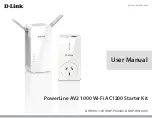
MDS 05-6628A01, Rev. B
MDS Orbit MCR-4G Technical Manual
iii
Antennas must not be co-located. All transmission antennas must be at least 20 cm apart to comply
with FCC co-location rules.
FCC Part 15 Notice
Operation is subject to the following two conditions: (1) this device may not cause harmful inter-
ference, and (2) this device must accept any interference received, including interference that may
cause undesired operation. Any unauthorized modification or changes to this device without the
express approval of the manufacturer may void the user’s authority to operate this device. Further-
more, this device is intended to be used only when installed in accordance with the instructions out-
lined in this manual. Failure to comply with these instructions may void the user’s authority to
operate this device.
Industry Canada Notice
This Class A digital apparatus complies with Canadian ICES-003.
Cet appareil numérique de la classe A est conforme à la norme NMB-003 du Canada.
Operational Safety Notices
The MDS Orbit MCR-4G may not be used in an environment where radio frequency equipment is
prohibited or restricted in its use. This typically includes aircrafts, airports, hospitals, and other sen-
sitive electronic areas.
Do not operate RF devices in an environment that may be susceptible to radio interference
resulting in danger, specifically:
•
Areas where prohibited by law
Follow any special rules and regulations and obey all signs and notices. Do not use the MCR-4G
when you suspect that it may cause interference or danger.
•
Near Medical and life support equipment
Do not use the MCR-4G in any area where medical equipment, or life support equipment may be
located, or near any equipment that may be susceptible to any form of radio interference.
Orbit Device vs. Minimum RF Safety Distance
Radio Module Type
Minimum Safety Distance
from Antenna
MCR-4G
20 cm
MCR-900
23 cm
Other models
Consult factory prior to operation.






































